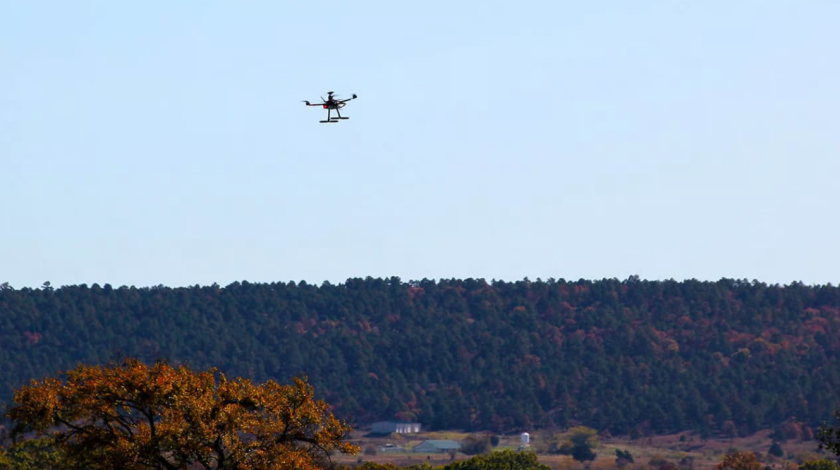An audit by the Office of Inspector General (OIG) at the US Department of Transportation has found that the Federal Aviation Administration (FAA) has made progress in advancing beyond visual line of sight (BVLOS) drone operations. However, OIG said the FAA could do more to achieve programme goals and improve data analysis.
In October 2020, the FAA launched the BEYOND programme as a four-year initiative, with a focus on working toward operating under established rules rather than waivers. BEYOND Phase 2 began in 2025, as a result of the FAA Reauthorisation Act of 2024 that established the second phase of the programme and extended it until 2029. When BEYOND Phase 1 concluded in 2024, it had recorded 70,563 total flights; of which 48,383 were BVLOS.
While OIG noted some highlights regarding FAA’s BVLOS programme management, it found that BEYOND’s overall effectiveness is “hindered by its lack of participant and mission variety,” and noted that FAA programme manager turnover impacted programme effectiveness.
OIG’s audit was initiated due to “potential challenges and safety risks associated with integrating drones into the National Airspace System (NAS)” and to provide oversight of FAA’s drone integration efforts for complex BVLOS operations. Its findings, released in a new report, show that the FAA increased approvals for BVLOS operations from 1,229 in 2020 to 26,870 in 2023, with forecasts predicted at over 1 million by 2027. To do this, the FAA has so far used small UAS rule waivers, air carrier operating certificates and regulatory exemptions. OIG found that the waiver process and communication had “significantly improved” during BEYOND.
The FAA told OIG that it “expects to establish new certification regulations for automated data service providers, including UAS service suppliers, using industry consensus standards”. In the interim, the Near-Term Approval Process (NTAP) is used to expedite approval of third-party service suppliers. FAA issued its first NTAP letter of acceptance in May 2024. The agency also used the process as part of its authorisations issued in July 2024 permitting multiple operators to fly BVLOS commercial drones in the same airspace in North Texas.
The OIG audit found that the majority of programme lead participants did not meet most of BEYOND’s six operational performance metrics and operators flew only a small percentage of flights without a visual observer. FAA data cited in the report notes that of the 40,000+ BVLOS flights in BEYOND, operators flew less than 763 of these flights without a visual observer.
The OIG report notes that the FAA “collects and shares partnership programme data but is not using comprehensive data to inform rulemaking, and its validation process can lead to errors.” FAA data reviewed by OIG as part of its audit indicated that the BVLOS flights flown by one operator were with a visual observer. However, the operator told OIG that their BVLOS flights were flown without a visual observer. For another operator, OIG found discrepancies between FAA and the lead participant’s data regarding the number of flights flown in BEYOND by one of their partner operators. OIG also identified multiple instances of FAA incorrectly classifying operators under the wrong partnership programme. The FAA told OIG that it is acquiring a software application that will enable an automated data transfer and intake process and integrate better with established FAA software tools.
Finally, OIG’s report states that the FAA’s rulemaking team decided they no longer needed societal and economic benefits data, despite programme goals to collect it. OIG is concerned that without collecting consequential community engagement data inputs, the FAA cannot know the full extent to which communities affected by drone operations are willing to buy-in to BVLOS flights nor provide best practices to other entities seeking to integrate drones within their communities.
As BEYOND’s second phase matures alongside the recent presidential executive order to expand and accelerate BVLOS drone operations, OIG has added to the FAA’s task list with a set of recommendations:
- Update BEYOND’s Key Performance Indicators as the programme continues into its next phase.
- Create a mechanism in BEYOND to add new lead participants to both replace lead participants who drop out of the programme and to enhance geographic and programmatic diversity.
- Consolidate all BVLOS drone flight data across multiple programmes and FAA offices into a single searchable repository to enable comprehensive trending and analysis.
- Develop and implement a process to enhance clarity and transparency across lines of business with programme participants regarding how the FAA is using collected drone operational flight data to inform policy efforts and identify any informational gaps and opportunities.
- Develop and implement a process to validate drone partnership programme data that enhances accuracy and reduces manual workload.
- Issue a formal policy on how to incorporate societal and economic benefit data into future operational assessments for specific BVLOS drone operations.
- Develop and implement a standardised approach to commence a new community engagement collection and education effort in the next phase of BEYOND.
The FAA has concurred with all seven recommendations outlined in the draft report “upon preliminary review” and said it has initiated planning activities to fully implement these measures by May 31, 2026.
For more information
OIG report on FAA BVLOS programme operations
Image: The Choctaw Nation of Oklahoma is one of the BEYOND programme’s key participants. (Choctaw Nation)




